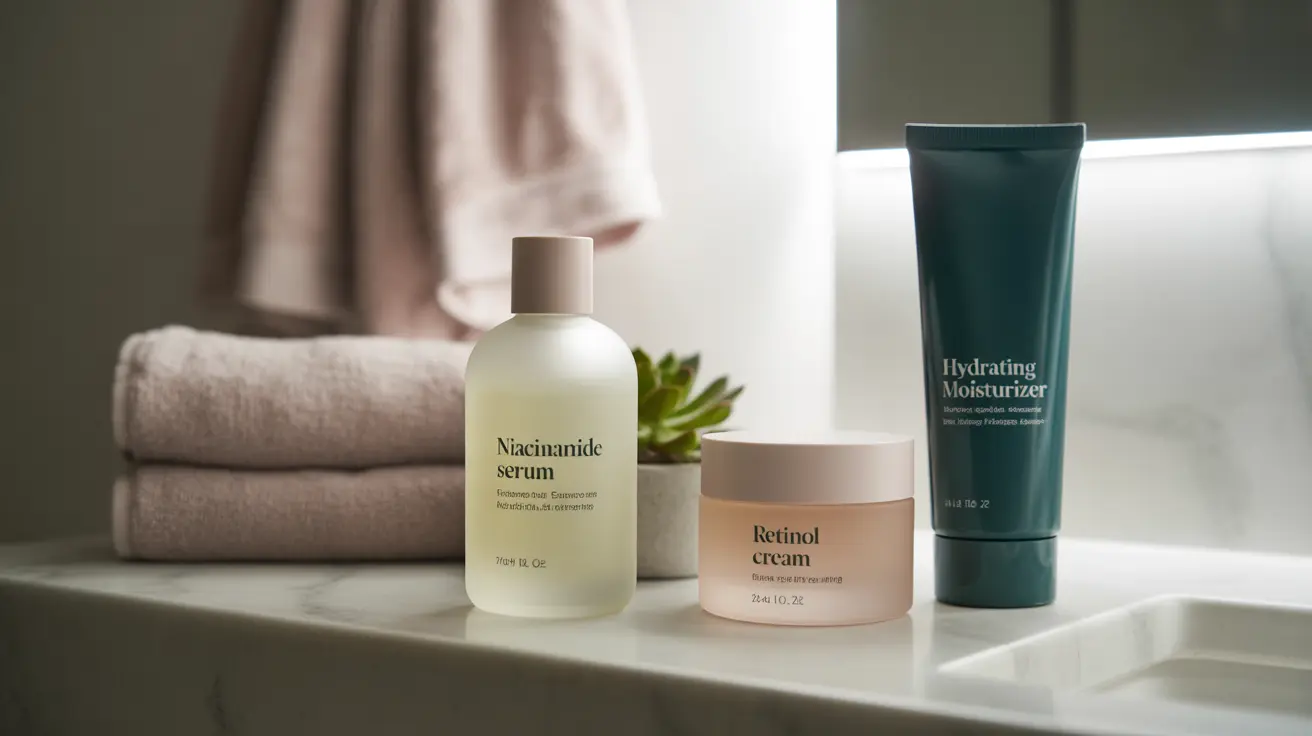For skincare enthusiasts seeking to maximize their anti-aging and skin-perfecting routines, combining niacinamide and retinol has become increasingly popular. These two powerful ingredients each offer unique benefits, and when used correctly together, they can create a comprehensive approach to achieving healthier, more radiant skin.
Understanding how to properly combine these ingredients is crucial for achieving optimal results while avoiding potential irritation. This guide will explore the science behind this skincare duo and provide expert advice on incorporating both ingredients into your routine safely and effectively.
Understanding Niacinamide and Retinol Individually
What is Niacinamide?
Niacinamide, also known as vitamin B3, is a gentle yet effective skincare ingredient that helps strengthen the skin barrier, reduce inflammation, and regulate oil production. It's known for its ability to improve skin texture, minimize pores, and enhance the overall complexion without causing irritation.
What is Retinol?
Retinol, a derivative of vitamin A, is renowned for its anti-aging properties. It works by promoting cell turnover, stimulating collagen production, and helping to reduce fine lines, wrinkles, and uneven skin texture. However, it can sometimes cause irritation, especially when first introducing it to your skincare routine.
The Benefits of Combining Niacinamide and Retinol
When used together, niacinamide and retinol can complement each other effectively. Niacinamide's soothing properties can help offset potential irritation from retinol, while both ingredients work synergistically to improve skin texture, tone, and signs of aging.
Key Advantages of the Combination:
- Enhanced skin barrier function
- Reduced potential for retinol irritation
- Improved moisture retention
- More comprehensive anti-aging benefits
- Better management of skin concerns like acne and hyperpigmentation
How to Use Niacinamide and Retinol Together
Proper Application Order
The most effective way to use these ingredients is to apply them in order of consistency, typically starting with the thinner product first. Many experts recommend applying niacinamide first, followed by retinol, but both can be effective regardless of order as long as you allow each product to absorb properly.
Timing Considerations
While both ingredients can be used in the same routine, it's generally recommended to use retinol in your evening routine, as it can make skin more sensitive to UV exposure. Niacinamide can be used both morning and night, making it a versatile addition to your skincare regimen.
Best Practices for Optimal Results
To maximize the benefits while minimizing potential irritation, consider these important guidelines:
- Start with lower concentrations of both ingredients
- Introduce one product at a time
- Allow 2-3 minutes between applications
- Always use sunscreen during the day
- Monitor your skin's response and adjust usage accordingly
Frequently Asked Questions
Can you use niacinamide and retinol together safely in a skincare routine?
Yes, niacinamide and retinol can be safely used together. In fact, niacinamide can help reduce the potential irritation that sometimes occurs with retinol use, making them an excellent combination for many skin types.
How does niacinamide help reduce irritation caused by retinol?
Niacinamide helps strengthen the skin barrier and has anti-inflammatory properties, which can help minimize the potential irritation and redness that retinol might cause, especially during the initial adjustment period.
What is the best order and time to apply niacinamide and retinol on your skin?
Apply the thinner product first, allowing 2-3 minutes between applications. While both can be used morning or night, retinol is best used in the evening, and niacinamide can be used twice daily.
Can using niacinamide with retinol improve signs of aging and skin texture more effectively?
Yes, when used together, these ingredients can provide enhanced anti-aging benefits. While retinol promotes cell turnover and collagen production, niacinamide improves skin barrier function and reduces inflammation, leading to better overall results.
Are there any side effects or precautions when combining niacinamide and retinol?
While this combination is generally safe, some people may experience mild irritation. Start with lower concentrations, introduce products gradually, and always perform a patch test. If irritation occurs, reduce frequency of use or consult a dermatologist.




